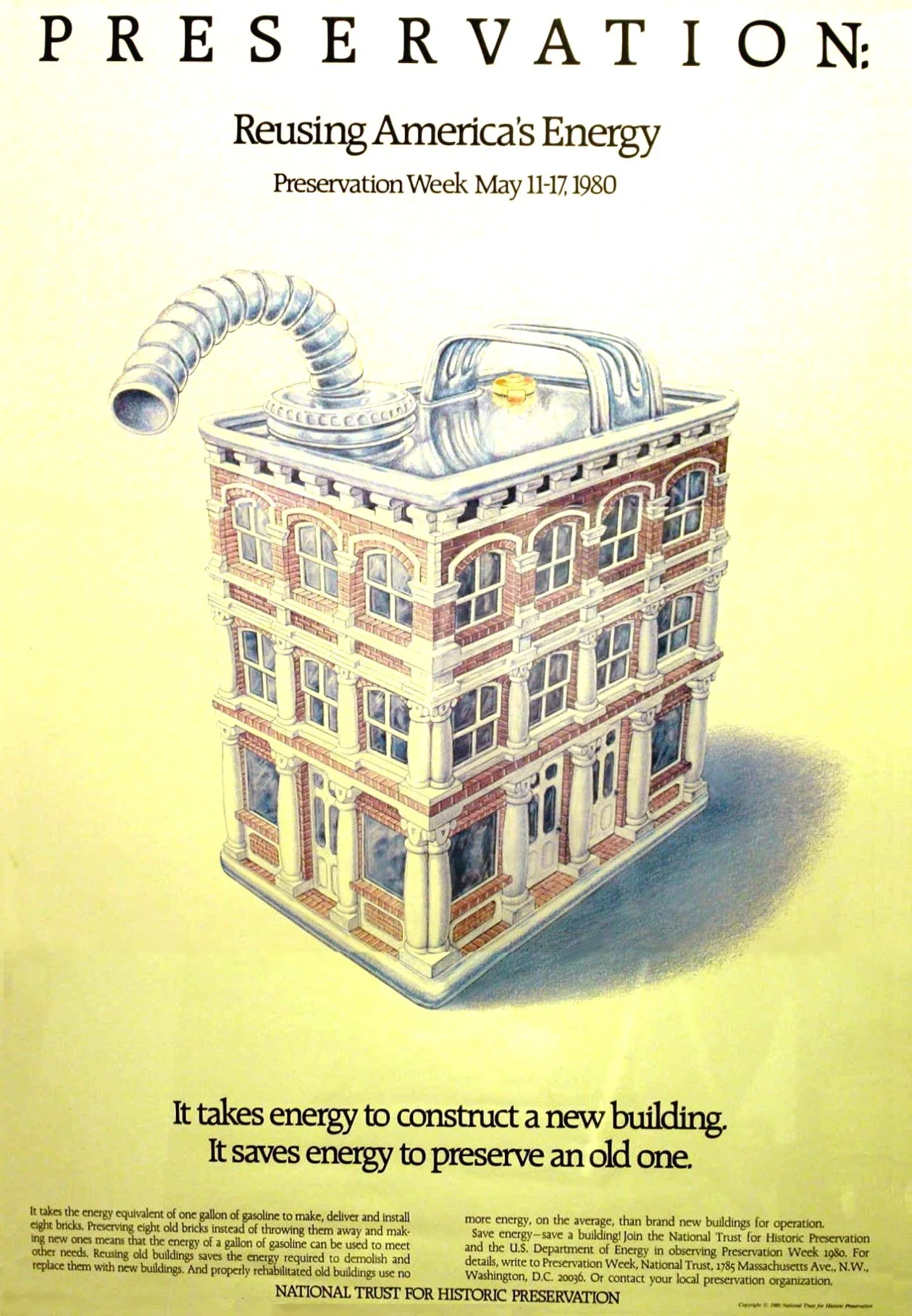Finding you in that room changed my life and stirred my soul. You had been waiting a long time, when the librarian showed me back to a large public meeting room and opened the door. There were some large colorized prints of the neighborhood places hanging around the room on the wall, and you were featured in one of the images. It was the coolest thing I had ever happened upon.
Growing New Roots for Our Colorado Home
Does absence make the heart grow fonder? It has been over a year since writing about my new duty with Colorado Main Street and a lot happened in 2018, just not so much blog writing! I am sorry for such a lengthy break. The move to Colorado was a challenging transition for my family, and spending time acclimating and adventuring together has taken priority.
Moving is like uprooting a plant and putting it somewhere new. Our life-connections (the people and places in our daily lives) are radically altered, and we have to adjust and figure out our place again.
Happy Earth Day with Love
Lucas Accepts New Duty with Colorado Main Street
In late February 2018, I will begin serving as the new Colorado Main Street Architect. The Colorado Main Street Program is housed in the Department of Local Affairs (DOLA), Division of Local Government (DLG) and rests at the absolute heart of DOLA’s goal to “Strengthen Colorado Communities.”
Having grown up in a small town in Oklahoma, improving the quality of life in rural communities is something I care about deeply. My love for rural community development really blossomed during my 6 years with the Oklahoma Main Street Program.
Since its kick-start in 2011, the Colorado Main Street Program has been providing high-quality, state-wide support to...
Lucas Resigns from Oklahoma Main Street after 6 years
After more than 6 years working my state's historic downtowns, I am resigning from the Oklahoma Main Street Program (OMSP). My time as the Main Street Architect with OMSP has been a life-changing opportunity where I have been able to serve and work alongside some of the best people that I have ever met.
It was a great blessing to find a meaningful, non-traditional path in the field of architecture. When I was hired, I did not comprehend the depth of the opportunity, but now I can share a few highlights:
Renewal is Valuable for Heart and Hometown
There is not a leaf that has fallen without promise. The promise of renewed life and the coming spring. Underlying this is an order that connects all things. Sometimes, architects have a sensitivity toward nature, but it is something that we could all explore further.
Sustainable communities, like the blood and flesh of our own bodies, are made from living parts. Just as the human body regenerates its own cells regularly, it also experiences entropy. In a similar way, we should not forget...
Quality Infill Development: Begins in the Past
Last week kicked off a broad sweep through some ideas for conservation-based development. Quality infill development can certainly conserve resources. It can also break the cycle of disinvestment and build back the vibrancy and strength that was lost when the heartstrings of our towns were stretched out in all directions.
The heart of a Green Heart Town is its historic district, and quality infill construction is a primary tool for keeping them healthy and strong. The Main Street district and surrounding historic neighborhoods were once the seat of all town life, the best place to buy and trade for good and services and interact with others from the area. After a time of disinvestment in historic downtowns from the 1960s-90s, these places are again becoming full of vibrant new potential.
Conservation-Based Development is a Return to the Land
Appreciating conservation-based development is to understand that we exist within something larger. Like a log being split, most development has torn us from our relationship with the land. Our natural environment not only provides the context for life, it is our largest and most important resource.
For long-time, we lived close to the land and developed a regionally-specific architecture that was built in sympathy to the surroundings. We created commercial centers called towns and cities, and others chose to live on large plots to farm. As Americans became 2 car households, got central air-conditioning, the color TV, and personal computers we have become uncoupled, or split, away from real living on this planet.
Refreshing Main Street America with Patrice Frey (Podcast)
This week at Green Heart Town Patrice Frey, President and CEO of Main Street America, joins us for the second half of our recent interview. Last week we discussed her background in sustainability and green historic preservation. In the following interview, we will discuss Patrice’s transition to leading the National Main Street Center, updating the brand for over 1,600 neighborhoods and communities nationwide, and “refreshing” the time-tested Four Point Approach.
Several weeks ago, we covered how “Main Street is the Time-Tested Basis for Green Heart Towns”, but at the conclusion of the post, I wanted to know more about what was happening with the program.
Green Historic Preservation with Patrice Frey (Podcast)
This week at Green Heart Town we have a very special guest. We interview Patrice Frey, President and CEO of Main Street America about her background in sustainability and her role in the movement of green historic preservation.
In recent years, there has been a growing undercurrent of people who appreciate historic buildings as both culturally significant and inherently sustainable resources. Living in a Green Heart Town requires understanding the deep value your historic properties offer. Through my work with the Oklahoma Main Street Program, I have been fortunate to follow this ray of truth and learn from sustainability champions like Patrice.
Die Hard: 7 Ugly Sins Killing Your Community
American culture has rejected sustainable community development for too long. Even though many of us want make our community stronger, the historic heart of our towns are often weak and perforated - due to the sins of our fathers. Some of us are guilty too! Like a dead whale launched to the beach by a tidal wave, many of our communities' best properties lie broken, abandoned, and steadily decaying. How did things get this way?
Through my work as the staff architect for the Oklahoma Main Street Program, I have come to find resonance inside the bowels of the past. Often far from revitalized, our historic downtowns broadcast your town’s self-concept - just like a neon sign.
The Big Day: Facilitating a Successful Design Charrette
Over the past two posts we have taken a new angle on design charrettes (fast-paced design workshops). First, we looked at the split paradigm between public and private realms, and how this sets a course for gathering project stakeholders. Then, we looked at gathering a team and took a deep-dive into the home, neighborhood, and downtown realms - even looking at the funky "in-between zones" where ideas can become really interesting. Now, let's wrap this rodeo and outline how to facilitate your own design charrette.
Catching Up With Life on a Golden Summer Trip
Last week my family and I left town, and have been staying in a vacation rental by owner (VRBO) in town of Golden, Colorado. So, this week I thought I could give you a (reading) vacation too. I want to share some pictures of the magic we are finding in and around Golden. It is such a vibrant place!
Next week we will continue exploring how to implement “Design Charrettes” in your home, neighborhood, and downtown. The idea for this topic has grown on me, and I need the time to put some new thoughts together.
From my family to your's, we wish you a wonderful summer!
Design Charrette: Workshops for Strong & Vibrant Communities
Have you began shifting your point of view? Last week we adopted a big picture view of community sustainability, and considered how each one of us can affect the realms with which we are connected. I like to imagine each one of us as a needle and thread, creating a quilt with others in the community.
Our home, neighborhood, and downtown are the three realms in which we are already fundamentally invested. Unlocking any distracting or preconceived notions about these places, while making sustainable progress, can be accomplished with the aid of an interactive design workshop called a charrette.
Whole Building Life-Cycle Assessment & Historic Properties
"When we build, let us think we build forever.” John Ruskin's words evoke the notion of building in a sustainable manner, thereby leaving a legacy to future generations through the story of our places. Every day in my work at the Oklahoma Main Street Center, I am fortunate to encounter historic buildings that mirror Ruskin’s ideals; however, I have also seen in the modern building movement that we have lost our way in designing sustainable places over the last half century.
I wanted to take the opportunity to reflect on a wonderful experience from 2015. I visited Taliesin West in early October to attend the the American Institute of Architect's (AIA) first joint colloquium
Holistic Building Design: Inherent Green and High Tech
Preservation Future Tense” was the theme for Oklahoma’s 29th Annual Statewide Preservation Conference held in Oklahoma City. In partnership with our State Historic Preservation Office, the Oklahoma Main Street Program invited James Lindberg, Senior Director of the Preservation Green Lab (PGL) to speak at the closing Plenary Session. Since 2009 PGL, a part of the National Trust for Historic Preservation, has authored some of the most current and forward-looking sustainable preservation research ever done.
Through reports such as The Greenest Building: Quantifying the Environmental Value of Building Reuse, PGL is outlining how historic preservation
Main Street: The Time-tested Basis for Green Heart Towns
The Main Street America™ revitalization strategy applied at the grass-roots level has allowed thousands of communities across America to recast their historic downtown districts as the heart of town life. The movement was launched by the National Trust for Historic Preservation in 1980. Since then, over 2,000 communities have followed the Main Street Approach, bringing renewed energy and activity to America’s downtowns and commercial districts, securing $65.6 billion in new investment, creating more than 556,000 net new jobs, and rehabilitating 260,000 buildings.
Existing Buildings are Green: Do They Energize You Heart?
Existing buildings just don’t stand a chance. Every month many glossy architecture magazines hit the newsstands, arriving in checkout lines like a plague of locusts. Anyone who loves beauty and design can’t help but shoot a quick glance and read the headlines. We can’t help but peek. As Americans, we are programmed to desire, want, and spend.
Vernacular Architecture & Place-Based Design - Part 2
Vernacular architecture (aka. traditional architecture) is a topic we are going to be referring back to often. “Looking back before moving ahead” is a principle that any sustainable designer should cherish. Not only are our communities’ histories informative, they are also treasures that can enrich our lives. We can choose to become part of the great story of our community, and leave it stronger.
Welcome to Green Heart Town
This blog is about creating a Green Heart Town: Renewing Your Home, Neighborhood and Downtown from the Inside Out.
For over a year, I considered the right direction for this blog. I could use the "I have never blogged before" excuse, but the truth is I'm a slow poke. One thing I knew for certain is...





















